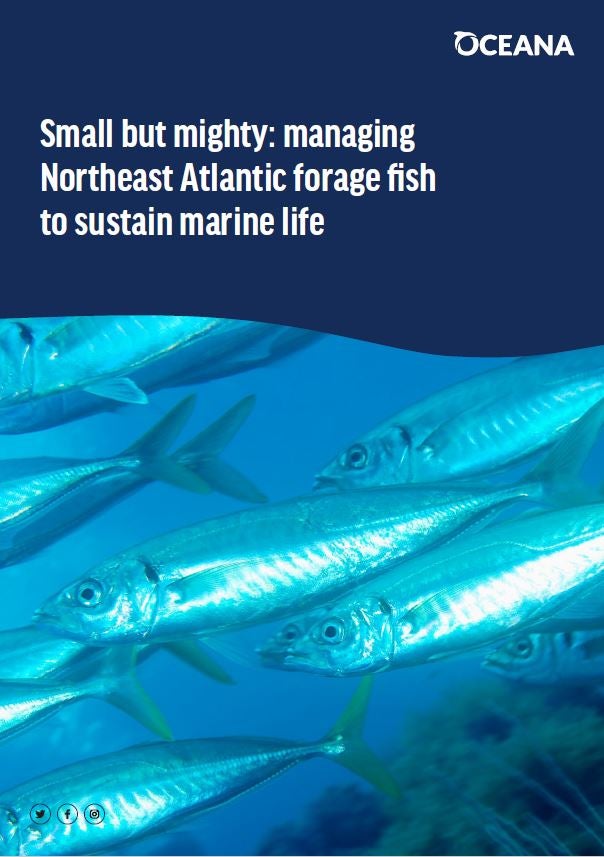Report | September 25, 2023
Small but mighty: managing Northeast Atlantic forage fish to sustain marine life
Forage fish are small to medium-sized species that are often found in large aggregations, feeding on plankton and other small aquatic organisms. They play a crucial role in the ocean as a vital link in the food web, supporting marine wildlife, including marine mammals, seabirds, and fish species. However, the management of fisheries targeting these keystone species currently fails to adequately account for the interaction among species throughout the food web, or the ecosystem at large.
In the Northeast Atlantic, notable examples of forage fish species include sandeel, sprat, herring, mackerel, Norway pout, and horse mackerel. Sandeel, for example, occurs in the records of over 60% of all predatory fish diets analysed in this report and plays a vital role in many seabird diets. The abundance and distribution of forage fish stocks tend to fluctuate significantly due to various factors, such as changing ocean temperatures and reproductive success, with fishing pressure exacerbating fluctuations.


